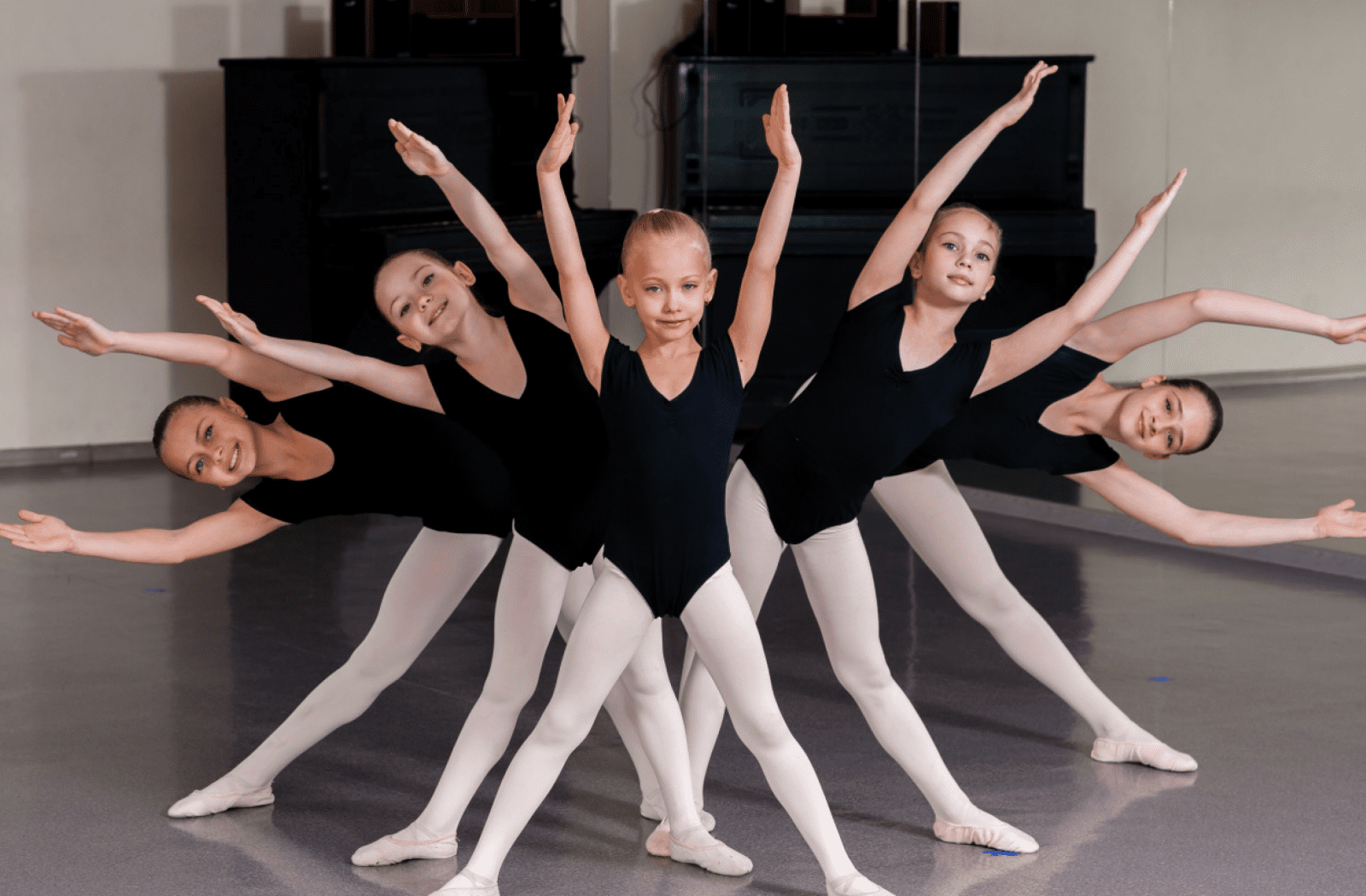Dancing into Higher Academic Scores

by Ellen Orr
Parents enroll their children in dance classes for a variety of reasons: it encourages fun physical activity, allows for positive socialization, and serves as a productive artistic outlet. Recent studies show that there’s one more major reason for kids to take dance lessons: dance provides immense academic benefits.
Researchers from the University of Madrid found that children who danced regularly scored significantly higher in all academic domains than the non-dancers did, even when the researchers controlled for age, maternal education, and health.
Pro-dance evidence also abounds in Sir Ken Robinson’s book Dance Education Around the World: Perspectives on Dance, Young People and Change. In it are stories of schools who have seen dramatic test-score increases after implementing dance programs. One principal reported that her students’ scores went from failing to 83 percent within two years of adding dance to their school-wide curriculum.
Local dance educators have seen similar results. “I have had students in the past who have definitely benefitted academically from dance,” said Gayle Burrow of All Stars Dance Center. “I had one student who was dyslexic and was forced into homeschooling because she struggled with reading so much. I worked with her in private lessons twice a week—working on every exercise we did in the reverse—and, the next school year, she was able to enter public school again and graduated a few years later.”
Kathy Fomby, Executive Director of Judith McCarty School of Dancing, agrees. “Dance training is the most valuable gift that you can give a child,” she said. “The concepts, music, and rhythm are mathematical, and counting and choreography reinforce simple and advanced math skills. Many favorite ballets are based on works of literature, and students are introduced very early to classic books and stories. Other forms of dance, like jazz and Flamenco, introduce students to other cultures. Tap challenges students to think quickly and to memorize long passages of choreography. The mental requirements that make a beautiful dancer are exactly the same as those of a successful student.”
Academic performance is reliant on factors other than intellect, though—like communication skills, teamwork ability, work ethic, and creativity. Fortunately, dance fosters all of these characteristics, too.
A study at North Carolina State University surveyed student dancers enrolled at the STEM-heavy school. The dancers reported that they believed the problem-solving skills, interdisciplinary thinking, and collaboration ability they learned in dance class translated to the academic classroom. They reflected that being in a dance community made them better members of their learning communities.
Dance is so successful at creating cohesive learning communities that there are entire nonprofits devoted just to implementing dance in schools for the purpose of improving students’ social-emotional skills. One such nonprofit, Dancing Classrooms (D.C.), boasts remarkable statistics: after participating in just 20 D.C. classes, 81 percent of students in the Los Angeles program reported treating their peers with more respect than they had before the classes. Researchers from Columbia University’s Teachers College found that, when the program was implemented in New York City, 95 percent of teachers saw their students’ cooperation and collaboration skills improve significantly.
The evidence is clear: dancing enhances academic education. Just one more reason for you and your ballerina-to-be, hip-hop hopeful, or tapper-in-training to join the Texarkana dance community.









